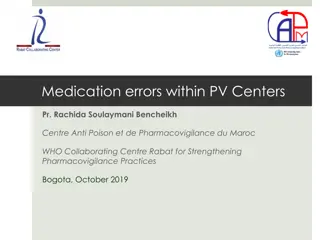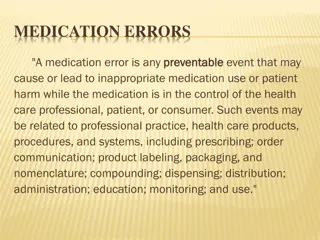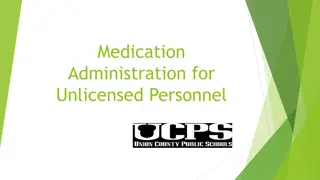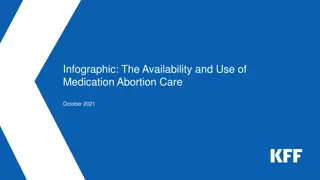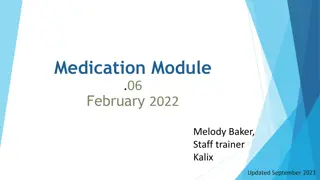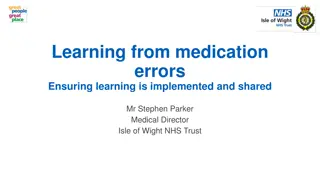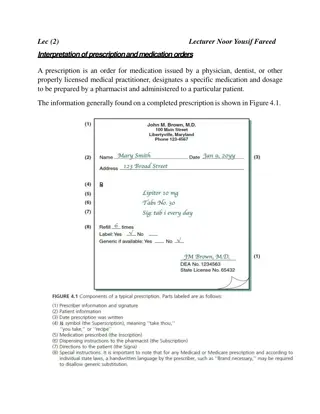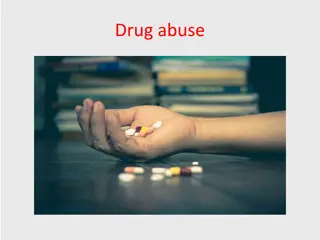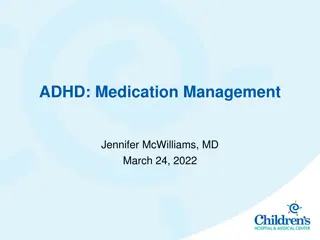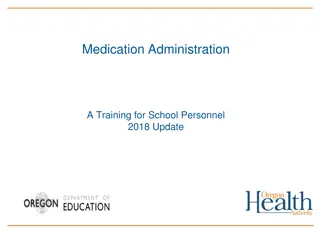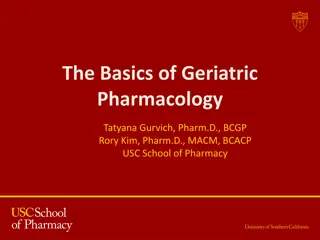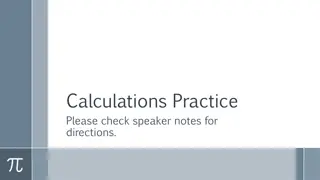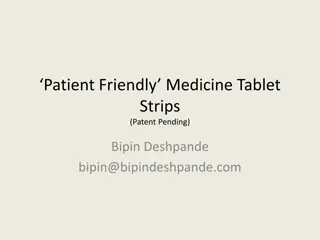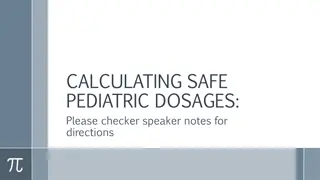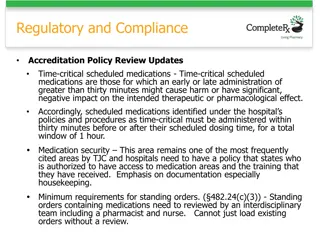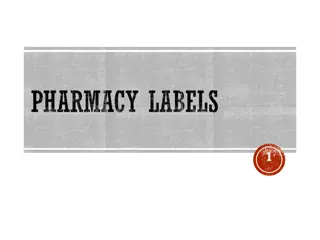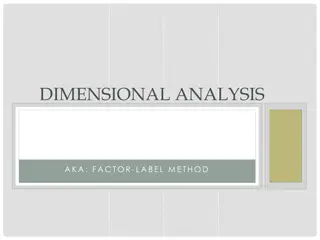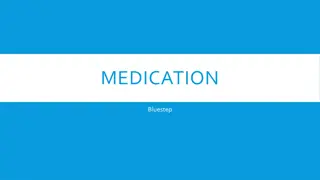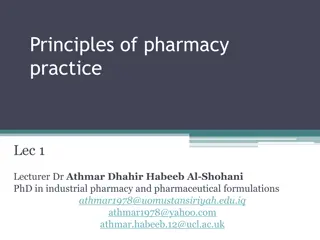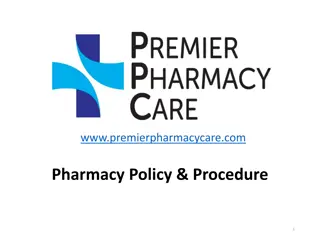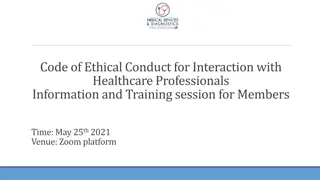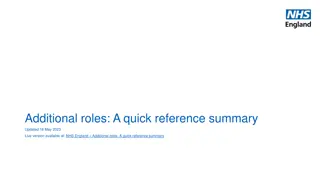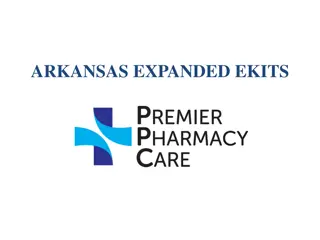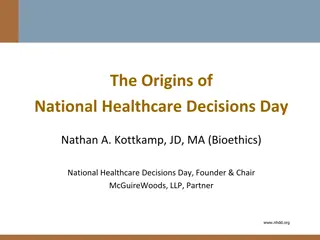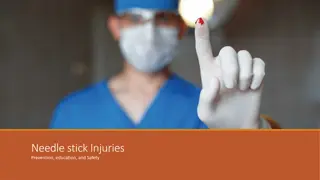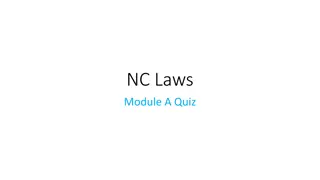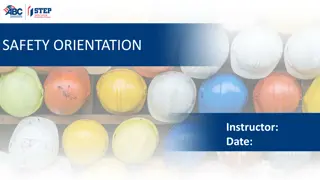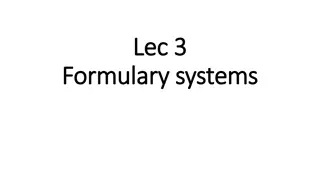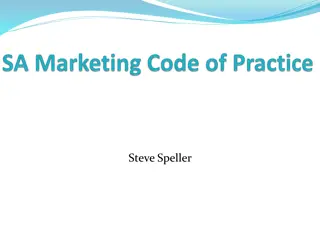Medication Safety Best Practices for Healthcare Professionals
The Medication Safety Standard emphasizes the importance of safe medication practices, including prescribing, dispensing, and administering medicines. It also highlights the need for patients to be informed about their medications and understand potential risks. The six rights of medication administration, high-risk medicines, effective patient communication strategies, and proper documentation of allergies are essential aspects covered in this comprehensive guide.
- Medication Safety
- Healthcare Practices
- Patient Communication
- Allergy Documentation
- Medication Administration
Download Presentation

Please find below an Image/Link to download the presentation.
The content on the website is provided AS IS for your information and personal use only. It may not be sold, licensed, or shared on other websites without obtaining consent from the author. Download presentation by click this link. If you encounter any issues during the download, it is possible that the publisher has removed the file from their server.
E N D
Presentation Transcript
Standard 4 Medication Safety August 2021
Standard 4: Medication Safety The Medication Safety Standard aims to ensure that clinicians safely prescribe, dispense and administer appropriate medicines, and monitor medicine use. It also aims to ensure that consumers are informed about medicines, and understand their own medicine needs and risks. Medication safety is a shared responsibility between nursing, medical and pharmacy staff.
Do you understand the six rights of medication administration? The six rights of medication administration the rightpatient the right medication the right dose the right documentation the right time the rightroute
Are you familiar with how to identify a high-risk medicine? Potassium Insulin Narcotics and neuromuscular blocking agents Chemotherapy and cytotoxic medicines Heparin and anticoagulants
How do you communicate with patients about medication safety? Ensure patient and carers have information about: treatment options proposed outcomes the generic and brand name of the medicine the general purpose of the medicine the prescribed dose information on important side effects Provide information in a way that is meaningful and easy to understand Involve patients in setting treatment goals Use the time when administering medicines as an education opportunity for patients and carers Provide printed consumer medicines information Provision of medicine related information should be recorded in the patient s healthcare record
Do you correctly document known/nil known allergies (NKA) in three places? 1. 2. 3. PAS MedChart Allergy and ADR and Clinical Alert Divider. Taking and documenting an accurate allergy history is critical, as it avoids preventable harm to patients and assists in deciding if the medicine can be used again. If a patient does not have any allergies, it is important to document nil known allergies, so we know the question has been asked.
Do you use the correct three patient identifiers for every episode of care? Admitted patients Patients who are not admitted Patient name (family and given Patient name (family and given names) names) Date of birth (DOB) Date of birth (DOB) Medical record number (UR number) Address Ensure you ask the patient to verbally state their name and DOB, as opposed to telling the patient and seeking their confirmation.
Do you know of a quality improvement activity undertaken in your area in relation to medication? Some examples of quality improvement activities related to Standard 4 include: ADR Awareness week included information about how to take a good allergy/ADR history and correct documentation of ADRs New patient information about the ADR and Medication Alert Card and about iron infusion New Extravasation protocol Introduction of waste bins for safer disposal of S8 and S11 medicines Amendment of cefazolin dosing in surgical antibiotic prophylaxis in individual MedChart protocols to align with current Therapeutic Guidelines Using red and green bags for discharge medicines
Improved processes related to S8 and S4D (S11) medications For all narcotics (S8) and S4D (S11) medicines: Two authorised persons to be involved in removal, preparation, completion of the six rights of administration, observing the administration and completing the appropriate documentation and witnessing and documenting disposal of any remaining medicines. This process will be formally rolled out during the coming weeks. Disposal of S8 and S4D liquid waste: Waste disposal bins make S8 and S4Ds unrecognisable and irretrievable. Bins are to be changed weekly and can be used multiple times until the line is reached during this time.
Smart pumps At Cabrini, it is mandatory to administer infusions, where appropriate, using a programmable infusion pump which employs dose error-reduction software. These pumps are known as smart pumps . Alaris infusion pumps are the smart pumps used at Cabrini. The Guardrails software on the pump assists in reducing medication administration errors by: Alerting the user if infusions have been programmed to be administered too fast or at dose which does not align with evidence based protocols Providing clinical advisories as reminders of specific practice points to assist with safe administration Allowing the design of drug libraries for specific care areas and patient populations For more information see the Alaris Infusion Pumps Cabinet page
Do you know how to access information and support tools about medication safety? Reference Viewer on MedChart MIMS e-Therapeutic Guidelines (eTG) Australian Medicines Handbook (AMH) + AMH Children s Dosing Companion Paediatric Injectable Guidelines Australian Injectable Drug Handbook (AIDH) Cabinet staff resources, pharmacy department pages Prompt Standard 4 Cabinet page: http://cabinet.cabrini.com.au/staff-resources/resources/accreditation/nsqhs-standards/standard-4
Is your medication safety training up to date? Medication Administration Safety Who needs to complete this? All registered nurses and midwives Frequency: Annual NPS MedicineWise Who needs to complete this? All new hire nurses and midwives Frequency: Once only Medication Administration Safety (Non-IV EEN) Who needs to complete this? Non-IV endorsed enrolled nurses Frequency: Annual. Paediatric Medication Administration Safety 2021 Who needs to complete this? Nurses and midwives who regularly care for paediatric patients. Frequency: every three years
Questions and support Questions Contact Contact details Medication management Julie Houghton jhoughton@cabrini.com.au / ext. 1682 Medication management Amanda Footit afootit@cabrini.com.au / ext. 1800 Prompt / policies and procedures Lucy Dawes ldawes@cabrini.com.au / ext. 3526 Clinical education and training Rick Peebles rbeebles@cabrini.com.au General accreditation, assessment and quality and safety questions Jodie Dooley jdooley@cabrini.com.au / ext. 3524 Communications support and resources Joanna Wills jwills@cabrini.com.au / 0427 685 086


